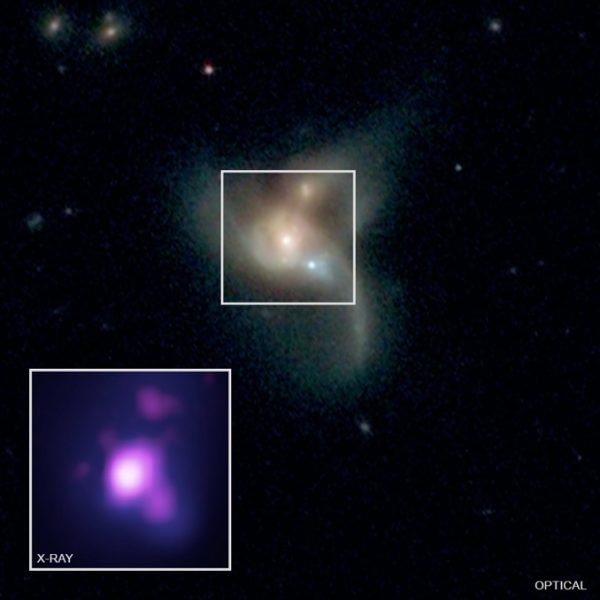Astronomers spot three supermassive black holes on collision course – Astronomy Now – Astronomy Now Online

Astronomers have spotted three galaxies hosting three supermassive black holes that are in the process of colliding.
“We were only looking for pairs of black holes at the time, and yet, through our selection technique, we stumbled upon this amazing system,” said Ryan Pfeifle of George Mason University, the first author of a new paper in The Astrophysical Journal describing the observations. “This is the strongest evidence yet found for such a triple system of actively feeding supermassive black holes.”
Said Shobita Satyapal, also of George Mason: “Dual and triple black holes are exceedingly rare, but such systems are actually a natural consequence of galaxy mergers, which we think is how galaxies grow and evolve.”
The system in question, known as SDSS J084905.51+111447.2, is about a billion light years from Earth. It was first identified as a system of colliding galaxies based on images captured by the Sloan Digital Sky Survey telescope. NASA’s Wide-Field Infrared Survey Explorer – WISE – space telescope then examined the system and found intense infrared emissions that indicated more than one black hole was involved in the merger.
Researchers next examined SDSS J0849+1114 with NASA’s Chandra X-ray Observatory in Earth orbit and the Large Binocular Telescope in Arizona. Chandra observed powerful X-ray sources in all three galaxies where one would expect to find supermassive black holes. Optical data showed the spectral signatures of material being sucked in and heated up as it is consumed.
Finding triple black hole systems is difficult because they are expected to be shrouded in gas and dust that would normally block much of the light generated by the material falling in. But X-rays and infrared light can pass through those clouds, opening a new window on the process.
“Through the use of these major observatories, we have identified a new way of identifying triple supermassive black holes,” said Pfeifle. “Each telescope gives us a different clue about what’s going on in these systems. We hope to extend our work to find more triples using the same technique.”





